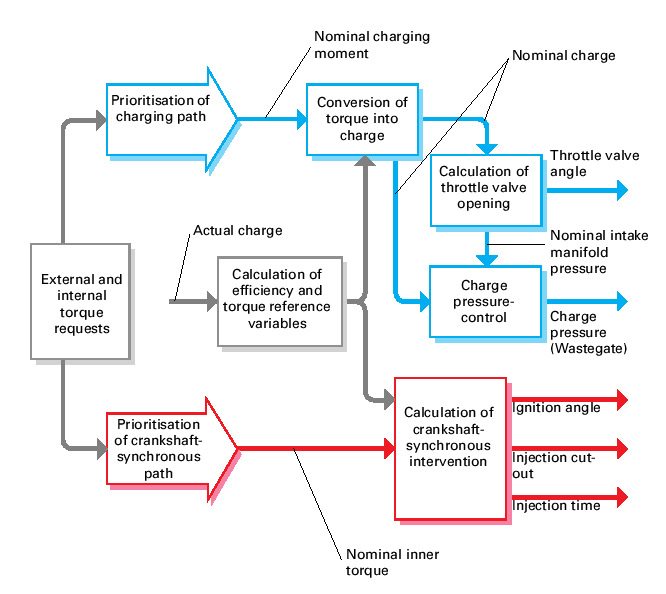Bosch ME7.1
The Bosch ME7.1 Engine Control Unit (ECU) appears to use two 16bit Infineon B59233-FA (aka SAK-C167CR-4RM) CPUs. Non-volatile code/data is stored on a single 16bit Am29F800BB 44 pin PSOP flash device.
ME7 is a load based engine management system.
ME7 continuously calculates the "nominal charging moment" (requested torque) that the user seems to be requesting. This, in turn generates a "requested load" (nominal charge), which is capped by "specified corrected load" (a function of RPM, IAT and other limiting parameters, such as knock control, etc.). This requested load determines the throttle plate angle and requested pressure. As long as lambda control stays closed loop, the ECU will adjust the fuel mixture via feedback loop using the narrow-band O2 sensors.
Once the ECU decides the load is large enough for enough time, or the requested AFR is no longer lambda=1, its fueling control system goes open loop. In the ME7.1 asynchronous path, this means that injector on-time calculations are going to be dependent on mass air flow sensor readings. Those MAF readings also go into the fueling maps as a "engine load" and are used to generate injector on times independent of O2 sensor readings.
In the ME7.1 synchronous path, the timing maps determine the timing at every cycle of every cylinder, and should the knock sensor for a given cylinder reach a certain threshold, the timing will be cut down for the next cycle for that cylinder. If the knock sensor activity subsides, the timing will be restored, one step at a time, until another knock event occurs on that cylinder.
Block diagram of the torque (load) based system's control flow:
References
- Andy Whittaker's excellent site
- Me-motronic Engine Management from Amazon.com.uk (ISBN 3-934584-34-9)
- The 2.7-litre V6 Biturbo Design and Function Self-study Programme 198
- A New Approach to Functional and Software Structure for Engine Management Systems - BOSCH ME7
- B59233-FA (aka SAK-C167CR-4RM) Datasheet
